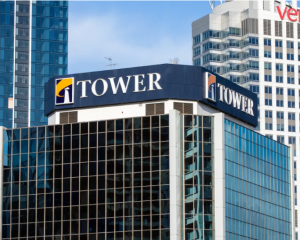Failing a catastrophe today or tomorrow, the United States Standard & Poor's 500 should reach the longest bull market in the post-war period.
Some analysts will dispute this, based on a different views of how to measure when bull and bear markets start and finish.
Craigs Investment Partners broker Chris Timms said conventional wisdom suggested the latest bull market would become the longest in modern history tomorrow.
The current record was held by the bull market that started in October 1990 and finished in March 2000 - when the dot.com bubble famously burst.
The current one began on March 9, 2009, when the S&P fell to a low of 666 points.
At the weekend, it traded at 2850 points, 328% higher before the impact of dividends was included, and slightly below the record high from January this year, he said.
In New Zealand, the NZX50 continued to hover around the 9000-points mark.
Mr Timms said there were well-reasoned arguments for why the New Zealand market remained strong.
Following the global financial crisis, New Zealand companies have a lot of borrowing on their balance sheets.
As they reduced debt, they had the ability to adjust cash flows and profits and provide dividends to investors.
The New Zealand economy was strong, giving companies the opportunity to keep on paying down debt.
During the period since the GFC, New Zealand had a low interest rate environment which was reducing the returns received on bank deposits.
In 2007, an investor with $500,000 in the bank could expect a gross return of $40,000 a year. Currently, the return on the same $500,000 would provide investors with a return of just $15,000, he said.
Call rates had slipped from 8% to 3% in 10 years. The cost of living had not gone down in the same period, leaving people searching for income from companies prepared to pay dividends.
In New Zealand, investors would still be looking for companies providing dividends, particularly after the Reserve Bank had pushed out its timing for a change in the official cash rate from next year until 2020.
The next rate change might also be down, rather than up, Mr Timms said.
Companies had, in the past, issued bonds at reasonable returns to attract investors. As the higher interest-bearing bonds had rolled off, now bonds were being offered at much lower returns.
Z Energy was seeking to raise as much as $125million through a new six-year bond offer paying about 4%. The issue which just rolled off was for 7.25%, a funding cost for the company of about 60% lower, he said.
The Australian market had not been so lucky as the one in New Zealand because of the difficulties with China backing out of some steel contracts, affecting mining companies.
In the United States, the GFC had hit companies hard, Mr Timms said.
Economically, the US had been working through the implications and companies had come through the downturn stronger than ever.
Companies had been helped by US President Donald Trump's tax changes which allowed them to bring money stashed offshore back to the US without exorbitant tax penalties, he said.
Some companies, like Apple and Berkshire Hathaway, had been returning cash to shareholders through dividends or share buybacks, an unusual occurrence in a country where capital growth was usually the main focus. Apple was providing a yield of 1.5%.
There was no doubt some ``experts'' were preaching doom and gloom, Mr Timms said.
What was once a seven-year boom, became an eight-year cycle, then a nine-year cycle.
``My gut feeling is there will be a correction at some point. The music has to stop sometime. When it will be, and how big it will be, I do not know.''
Markets had become almost immune to global events. Following the terrorist attacks in the US in 2001, markets fell around the world.
Now, someone could drive a car into a crowd, or explode a bomb, and financial markets took it in their stride, he said.
The one major thing to have changed in the latest bull run was it was ``not growth at any cost'', as it was before the GFC.
It was prudent to remain cautious, Mr Timms said.











